In addition to puzzles and alcohol, one product that saw a significant boost in sales during the pandemic was the energy storage system. With more people looking at their homes as sanctuaries in need of reliable electricity, the demand for residential battery backup is on the rise.
“In 2020, people’s houses became their oasis. It’s where they work, where they play. COVID was a huge part of that, but it’s easy to forget we also had record numbers and intensities of hurricanes in the gulf and we had a crazy wildfire season in the west,” said Jeremy Niles, channel marketing manager for Generac Power Systems. “Homeowners really felt they needed to be prepared for anything to have a stable home base. Solar + storage — people are seeing that as the best possible option.”
The residential storage market has been growing steadily every quarter since early 2019. Wood Mackenzie is predicting that the sector will expand by six-times through 2025, largely attributed to the desire for resiliency.
The pool of battery suppliers is expanding too. Solar panel company JinkoSolar is diving in, releasing lithium batteries for the large-scale market. And major residential players are improving the capacities of their core models: sonnen lowered its price and improved its capacity to 10 kWh, while the LG RESU system can now provide 16 kWh of energy. Generac, a leader in portable power, offers 18 kWh of backup power with its PWRcell system.
“We’re extremely bullish on the energy storage market. Energy storage is primed to grow enormously and I think we’re well positioned to take advantage of that growth,” Niles said about Generac. “To be frank, we intend to become a market leader. One key thing that’s going to be a major competitive advantage for this year is consistent inventory. The balance sheet that allows us to stock large quantities and make those available for installers has proven to be a key differentiator.”
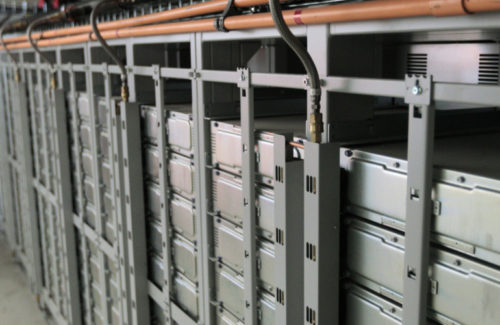
Battery racks at the 1,200-MWh energy storage facility at Moss Landing Power Plant in California. Credit: Vistra
Non-residential storage deployments are rising too. WoodMac expects the U.S. storage market to grow from 1.2 GW in 2020 to nearly 7.5 GW (26.5 GWh) in 2025, mostly from utility-scale procurements. Large-scale front-of-the-meter (FTM) energy storage systems are showing the most growth. WoodMac again found that more FTM storage was installed in Q3 2020 than was installed across all segments during any other quarter over the past seven years.
The largest single-site energy storage project in the United States just came online in California this January. The 1,200-MWh energy storage facility at Moss Landing Power Plant may also be the largest battery system in the world. The batteries enhance reliability on the California grid, which has been hampered recently by emergency shutdowns due to wildfires and other weather concerns.
You thought that was big? Mortenson is right now constructing the largest solar + storage project on record for Terra-Gen. The 1.1-GW Edwards & Sanborn solar array in Kern County, California, will be paired with 2,165 MWh of lithium-ion batteries that should come online by the end of 2022. That’s 2.5 million solar panels and over 110,000 battery modules.
It’s a major win for solar + storage, another growing section of the market. ITRPV found that 4% of global solar PV projects in 2020 came paired with batteries, and the group expects 50% of projects will be solar + storage by 2030. Installer SunPower has already seen adoption rates of the combined technologies increase in the residential market.
“Not only do these storage systems improve resilience, but they allow consumers to take advantage of any excess energy by selling it back to their local utility,” said Norm Taffe, executive VP of North American residential sales for SunPower. “It’s only a matter of time until all new solar installations include a storage component, and as battery technology continues to improve, we’ll see attachment rates approaching 50% in California and 25% nationwide in the next two years.”
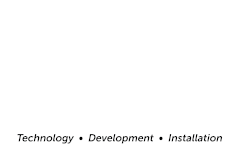
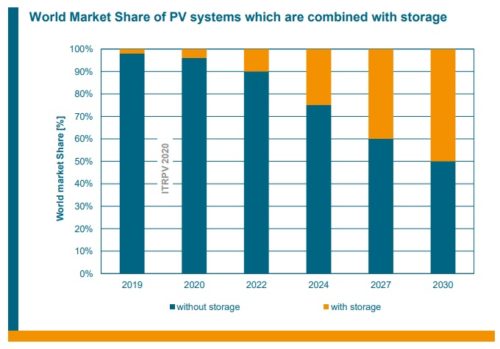
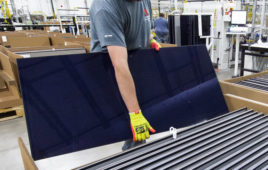
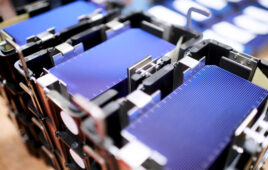
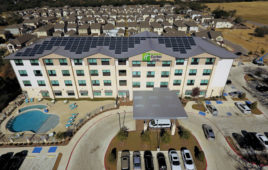

How many kwh residential home storage batteries are installed last year? Any idea?
It is true that the world is constantly looking for better ways to harness and store environmentally friendly energy. Solar power is readily available in most parts of the world and do not have moving parts. We just hope soon it will be cheap to harness it and also store it.
“The pool of battery suppliers is expanding too. Solar panel company JinkoSolar is diving in, releasing lithium batteries for the large-scale market. And major residential players are improving the capacities of their core models: sonnen lowered its price and improved its capacity to 10 kWh, while the LG RESU system can now provide 16 kWh of energy. Generac, a leader in portable power, offers 18 kWh of backup power with its PWRcell system.”
Companies like Humless Universal or Electriq are offering modular energy storage solutions as well as a recent announcement of Simpli-phi with a system that can be modularly increased up to around 99kWh of energy storage. We are beginning to see a ‘blur’ between small C&I systems that are usually three phase systems with similar residential systems with modular battery expansion capacity that is right around the “business” sized ESS. Perhaps international players like Solectria, Chint, Kore Power will offer a system sooner or later for the residential 240VAC split phase market. The newly announced LG RESU FLEX is supposed to be a smart ESS that also has stackable modules of battery storage available soon. Ran across a company Kilo watt labs that says they have a system using (super capacitors) and the stuff they’re selling in Africa and Australia brings prices of $5,400 USD for an enclosed 7.1kWh energy storage module with an advertised charge/discharge capacity of 1,000,000 times or around 45 years of online use. It sounds almost too good to be true and yet there are some systems online and they actually post the cost of their modules online, for the most part in (R), Rand per module.
Some of the past complaints that residential ESS don’t have the surge capacity to start big loads like house A/C units, electric water heaters, even vacuum cleaners, washer/dryers and refrigerators/freezers with auto defrost can be a pretty large electricity draw when in defrost mode. Still it is possible today to get 48VDC inverters in the 8kW 240VAC split phase output range that can be set up master/slave parallel and give the ability to have high surge load capability with a fall back to single inverter power after the loads initial surge is served. As battery pack prices come down, it will become more common to see solar PV with smart ESS on homes and systems that allow resiliency for a more grid agnostic experience.
Absolutely great article! Energy storage for home specifically is starting to become a must in California especially if people are going remote with work or have a CPAP machine for Sleep apnea. With all the power outages and issues, having a battery backup like the Tesla Powerwall combined with solar can allow people to have power while there’s power outages.
The big thing here is how people take advantage. Most people tend to go for affordability in the short term such as leasing, but the better way to look at Solar + Battery Storage is to own as there are a lot more pros than cons.
Either way, energy storage is now becoming a must for residential and commercial buildings.